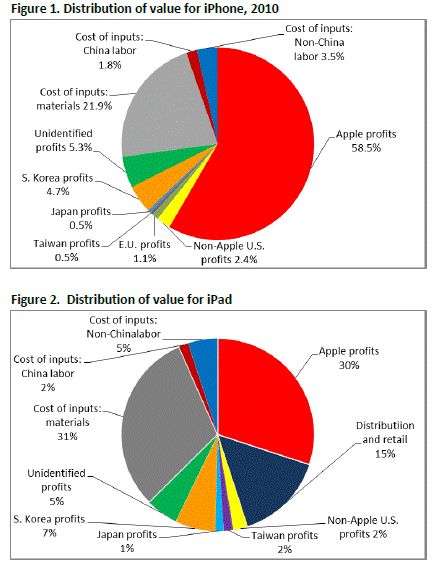|
Abstract
This article analyzes the distribution of value from innovation in the global supply chains of the Apple iPad and iPhone.
We find that Apple continues to capture the largest share of value from these innovations. While these products, including most of their components, are manufactured in China, the primary benefits go to the U.S. economy as Apple continues to keep most of its product design, software development, product management, marketing and other high-wage functions in the U.S. China’s role is much smaller than most casual observers would think.
A key finding for managers is that they need to beware of relying too heavily on single customers. With its control over the supply chain, Apple has the power to make and break the fortunes of many of its suppliers. A key finding for policymakers is that there is little value in electronics assembly. Bringing high-volume electronics assembly back to the U.S. is not the path to “good jobs” or economic growth.
Who captures the financial value?
Like the iPod, the iPad and the iPhone are big money makers for Apple. While other companies are thrilled to be part of the supply chain for these highly successful products, their benefit in dollar terms pales in comparison to Apple’s. Among countries, China’s economy continues to play a surprisingly small role in comparison to the U.S., Korea, Japan and Taiwan.
In the case of the iPad, Apple keeps about 30% of the sales price of its low-end $499 16GB, Wi-Fi only model (and more if the unit is sold through Apple’s retail outlets or online store). We estimate that Apple keeps a healthier 58% of the sales price of the iPhone 4. In both cases, these are far greater than the amounts received by any other firms in the supply chain.

Link to the full report
|